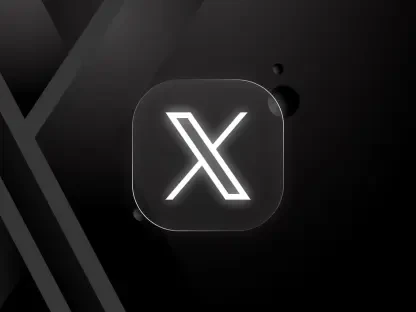A global leader in SEO, content marketing, and data analytics, Anastasia Braitsik is our Digital Marketing expert today. With LinkedIn making shifts reminiscent of platforms like TikTok, the social media landscape is evolving, and businesses must adapt. We’ll delve into algorithm changes, advertising growth, the role of video content, and LinkedIn’s strategic pivot to gain insights from Anastasia’s expertise.
What prompted LinkedIn to change its algorithm last year?
LinkedIn’s algorithm change was primarily driven by the need to adapt to the evolving digital landscape. As other social platforms began targeting the business market more aggressively, LinkedIn recognized the necessity to enhance user engagement by prioritizing content consumers rather than creators. They aimed to create a more personalized and relevant experience, pushing for quality over quantity in the content that appears in users’ feeds.
How has the shift to prioritize content consumers over creators affected user engagement?
The emphasis on content consumers has led to a significant drop in organic reach for many creators. While this shift aims to connect more relevant content with users, the downside is that businesses with smaller followings find it challenging to reach their audience without investing in paid advertising. Engagement metrics have been impacted, with LinkedIn relying heavily on AI-driven content to keep users scrolling and engaged, similar to platforms like TikTok and Instagram.
Why is LinkedIn seeking growth in its advertising model?
LinkedIn’s drive towards advertising growth comes from the need to boost revenue, which has shown signs of slowing. Premium subscriptions and talent solutions have been stagnant, prompting LinkedIn to evolve into a full-fledged ad channel. By incorporating advertising models, LinkedIn seeks to diversify its revenue streams and position itself more robustly within the social media advertising space.
Why has LinkedIn placed a strong emphasis on video content?
LinkedIn has emphasized video because of its effectiveness in increasing reach and user engagement. The platform has seen a significant rise in video usage and viewer time, indicating that users are spending more time engaging with video content. B2B influencers play a crucial role in LinkedIn’s video strategy, helping to amplify messages and validate the platform’s shift towards a more visual content strategy.
How should businesses adjust their strategies in response to LinkedIn’s new direction?
Businesses need to adapt by enhancing their video content offerings and focusing more on thought leadership. Given LinkedIn’s new direction, it’s crucial to prioritize personal storytelling and create engaging content that resonates with audiences. Companies should consider shifting budgets towards video promotions and move away from relying solely on corporate page content for organic visibility.
How does LinkedIn’s pivot compare to other platforms targeting business and small business markets?
LinkedIn’s pivot is aligned with trends observed on other major platforms targeting businesses. While LinkedIn continues to serve its professional audience, this shift towards ad revenue mimics strategies seen on TikTok and Instagram, which capitalize on video content for engagement. The challenge lies in maintaining credibility and trust among its user base while implementing these changes.
Can LinkedIn sustain long-term growth with its current strategy?
Sustaining long-term growth will depend on LinkedIn’s ability to balance between ad revenue generation and maintaining user engagement. Integrating more video content and incentivizing influencers are steps in the right direction, but LinkedIn must ensure it doesn’t alienate its core user base of recruiters and job seekers. Continuous adaptation and innovation will be necessary to thrive amidst competitive platforms looking to dominate the business market.
What are the potential risks and rewards of LinkedIn resembling platforms like TikTok and Instagram?
The primary risk is LinkedIn potentially sacrificing its unique identity as a professional networking site for broader social media features. While the rewards include increased engagement and revenue from ads, the platform might face challenges in retaining its professional image and mission. LinkedIn must carefully navigate these dynamics to leverage the rewards without compromising its original goals.
What is your forecast for LinkedIn’s direction in the coming years?
LinkedIn’s direction will likely continue to revolve around enhancing its advertising offerings while integrating more creative content strategies like video. However, the platform must stay true to its foundational mission to balance revenue growth with providing genuine value to its users, whether job seekers or businesses. The interplay between its core essence and innovative shifts will define LinkedIn’s success in the coming years.









